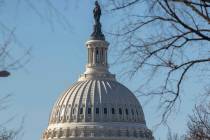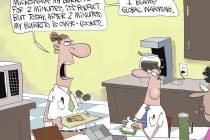Payday lending proposal squeezes low-income earners
Many Americans take for granted that if they have a toothache and need a cavity filled, they can afford to pay the dentist. If their car broke down tomorrow, they could pay the repair shop with cash or on credit. But for most low-income households living on extremely tight budgets, these options aren’t available.
A recent survey from the Federal Reserve finds that two-thirds of Americans making under $40,000 per year would have to either sell something or borrow money in the event of a $400 emergency expense.
Of course, not every household has something of value they can sell. And borrowing money from family or friends isn’t always an option. In these emergency circumstances, a large number of low-income individuals have turned to short-term loans, or payday loans, to plug the gap until their next paycheck.
Payday loans have long earned the scorn of consumer activists for being “predatory.” The lending industry is one of the primary targets of the Consumer Financial Protection Bureau, the new regulatory agency created by the 2010 Dodd-Frank Act to rein in the financial system. However, consumers don’t harbor the same animosity — payday lenders consistently score high in consumer satisfaction.
Researchers at George Washington University’s School of Business, where I teach, have studied the payday loan business for a while. Several years ago, GWU published a study which found that 89 percent of payday loan customers surveyed were either “very satisfied” (55 percent) or “somewhat satisfied” (34 percent) with their most recent payday loan. And 86 percent believed that payday lenders provide a useful service.
A 2015 study from GWU business professor Howard Beales examined more than a million small-dollar installment loans, including payday loans, in 16 states. The study found those who borrow repeatedly are more likely to repay their loans and are also more likely to pay lower interest rates, indicating they’re considered less risky after showing their ability to repay their loans.
One of the biggest myths about payday loans is that they’re much more expensive for consumers than other financial products. Yet they are less expensive than fees incurred from bouncing checks or overdrawing their bank accounts, or credit card late fees with high interest rates — products not being targeted as aggressively by the CFPB. Consumers also report they are well aware of the cost of their payday loan, and that interest rates are largely displayed at lending centers.
None of these facts deterred the CFPB from proposing new regulations on the payday lending industry that analysts say could reduce the availability of such loans by up to 70 percent.
Perhaps removing one of the few viable (and legal) financial options available to low-income consumers wouldn’t be so problematic if the CFPB’s rules would save consumers from defaulting on their payday loans and ruining their credit. Unfortunately, research indicates this isn’t the case.
Under the CFPB’s rules, borrowers would generally be barred from “rolling over” their loans — taking out a new payday loan to pay off an existing one — more than twice.
Another recently released academic study from Jennifer Lewis Priestley, a professor at Kennesaw State University, examined the impact a high number of payday loan rollovers had on borrowers’ credit scores. She found that borrowers with a high number of rollovers actually saw more positive impact on their credit than consumers with few rollovers. Borrowers who did experience a decline in credit scores were more likely to live in states that have laws restricting access to payday loans.
In addition, the CFPB’s rules requiring that short-term lenders show evidence borrowers can repay their loans — verifying income, debts and credit history — will significantly limit the number of borrowers eligible for loans.
The CFPB’s quest to eliminate payday loans and other short-term lending options will leave low-income Americans with few legal options to turn to when an emergency expense arises. That’s hardly providing “financial protection” to the Americans who need it most. Let’s hope these needy families have something they can sell the next time their car breaks down.
Jeffrey H. Joseph is a professor at the School of Business at George Washington University.























